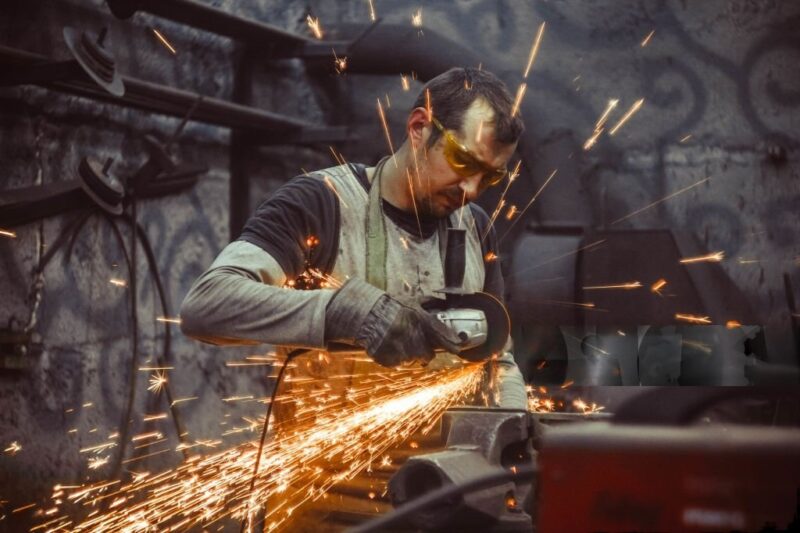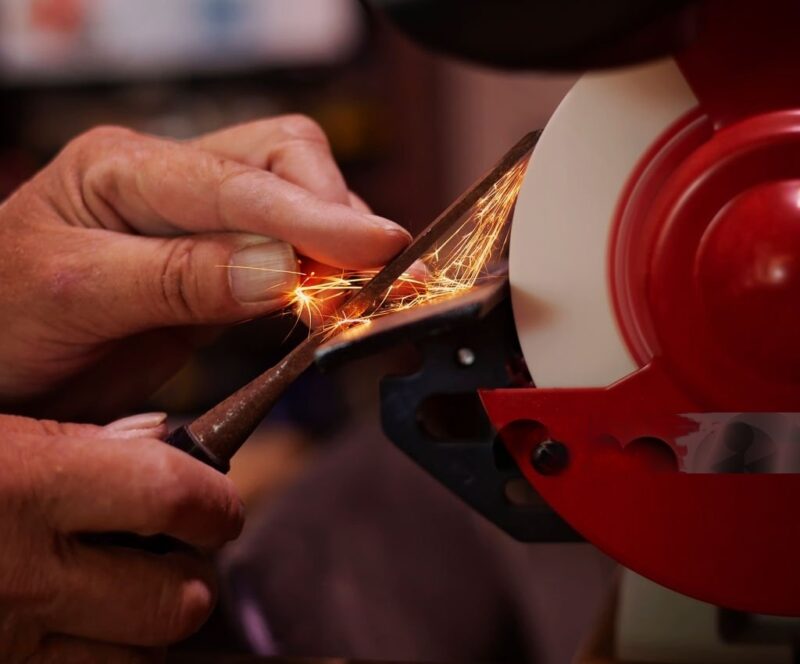While carving wood is a creative and fulfilling activity, the best results need sharp tools. Unskilled instruments can make carving challenging and dangerous, resulting in subpar work and possible harm. In this article, we’ll show you how to sharpen wood carving tools so they stay in optimal shape, especially for those practicing wood carving for beginners.
Why Sharp Tools Are Essential for Wood Carving
When carving wood, sharp tools are essential for making clean, accurate cuts. They improve the entire carving experience, provide more control, and require less work. The first step to becoming an expert woodcarver for novices is realizing the value of tool upkeep.
Tools and Materials You’ll Need

Assemble the required supplies before you start honing your wood carving implements:
- Sharpening stones (coarse, medium, and fine grit)
- Sharpening guide
- Grasping a leather and substance
- Lubricant (water or oil, according on the type of stones you have)
- Use a paper towel or cloth to clean.
Step-by-Step Guide to Sharpening Wood Carving Tools
1. Assess the Sharpness of Your Tools
Examine your tools first. Look for any dull areas or nicks on the edges. Gently run the blade along your thumbnail to check for sharpness. A dull tool will glide off, while a sharp one will catch just a little.
2. Prepare Your Sharpening Stone
Select the grit that is right for your tool’s condition. For very dull or damaged edges, use coarse grit; for regular sharpening, use medium; and for honing, use fine grit. To ensure smooth sharpening and avoid clogging, apply the lubricant to the stone.
3. Sharpening the Blade:
- Position the Tool: For carving tools, the proper angle is between 20 and 25 degrees. Place the blade on the stone at this point.
- Move the Blade: Move the blade back and forth across the stone with steady pressure. Make sure you coat the edge uniformly.
- Check Progress: Regularly make sure the blade is uniformly sharp.
4. Honing the Edge
After sharpening, refine the edge with a honing stone or a fine grit sharpening stone. Repeat the same motion, but with lighter pressure. This step polishes the edge and removes any remaining burrs.
5. Stropping the Blade
The last action needed to get a razor-sharp edge is striking. Put stropping compound on the strop made of leather. To further sharpen and polish the blade, pull it away from the edge along the strop. Continue until the edge is razor-sharp and like a mirror.
6. Test the Sharpness
Take a piece of softwood and carve it to see how sharp it is. The tool ought to cut easily and smoothly. If not, go back and do the stropping and honing stages again.
Tips for Maintaining Your Wood Carving Tools
- Frequent Maintenance: To maintain your tools in top shape, sharpen them on a frequent basis. Maintaining a sharp edge is simpler than trying to make a dull one go back.
- Appropriate Storage: To avoid rust and damage, keep your tools dry. Put on casings or protective sheaths.
- Clean After Use: To get rid of resin and wood fragments, clean your tools after every use. Their lifespan and performance are extended as a result.
Recommended Essential Woodworking Tools for Beginners
With the proper tools, woodcarving beginners can achieve great success. For novices, these are some essential woodworking tools for beginners:
- Carving knives: Perfect for detailed work and fine cuts.
- Gouges and chisels: Ideal for removing larger chunks of wood and shaping.
- V-tools: Great for adding texture and intricate details.
- Mallet: Useful for driving chisels through harder wood.
Final Words
For novices especially, sharpening your wood carving tools is a crucial skill. You can safely and successfully enjoy the art of wood carving if you have sharp tools. You can make sure your equipment stay in top shape and are prepared to realize your creative ambitions by following the instructions provided in this guide. Cheers to your carving!

